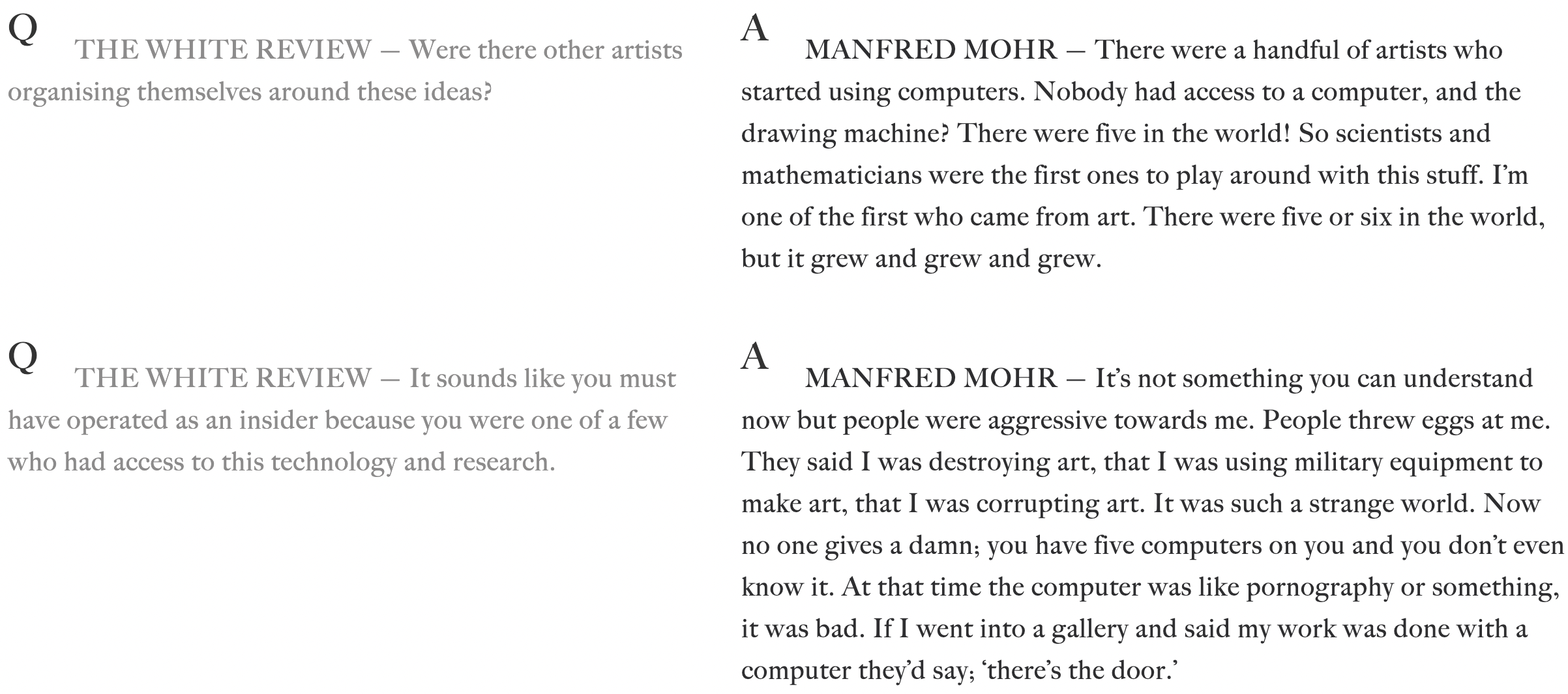- Attendance
- Golden Rectangle: I forgot to add…
- Modern art as CIA psy-op: link, link
- Live-coding: A Schotter solution
- Live-coding: Getting the bits of a binary number
- Notes from “Generative Design” by Groß.
- Exit Ticket (leave time before DPL trip)
- Visit to Digital Print Lab
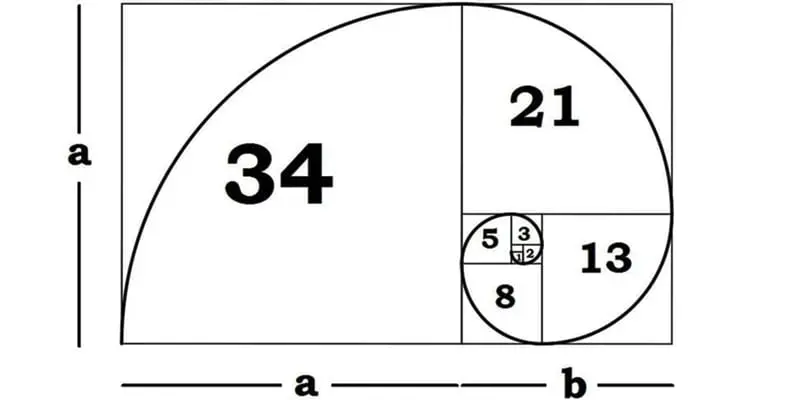

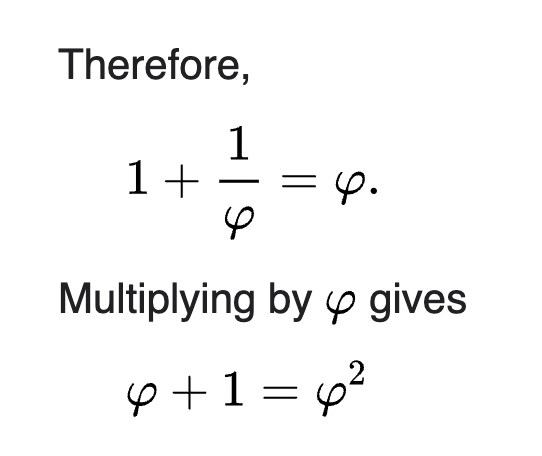
Links for today:
Paul Rickards is an artist and retrocomputing enthusiast active on #PlotterTwitter. In September 2016 he tweeted this small study, “Grid of imperfect circles”.
- If you had to guess, attempt to describe the algorithm which produced this work.
- To the extent that this artwork is interesting, what makes it so? (Can you imagine this work without the imperfections in the circles?)
- How is disorder expressed in this work? (Do you think the circles are intended to look “hand drawn”?)
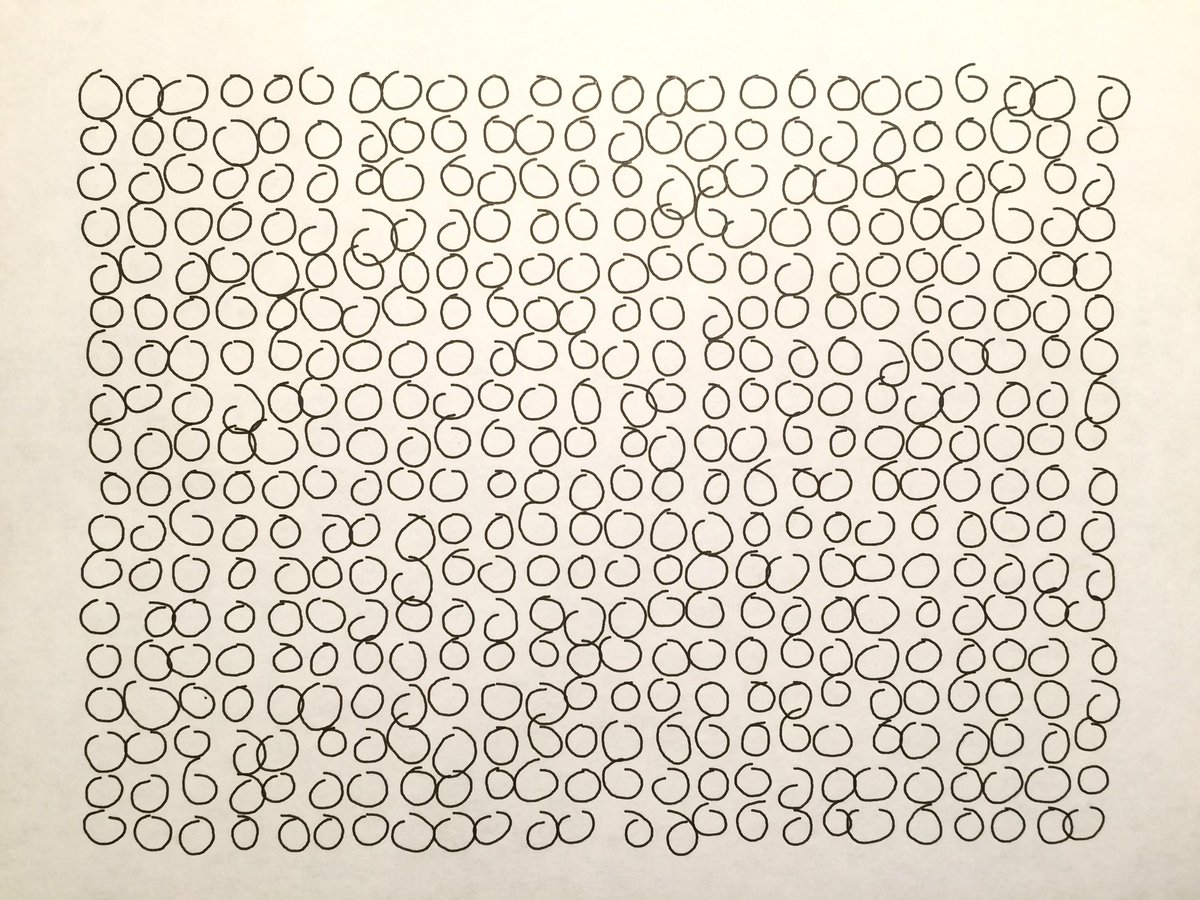
Origins & Pioneers: Vera Molnár, Duane Palyka
An homage from Gen-Z generative artist, Alida Sun:
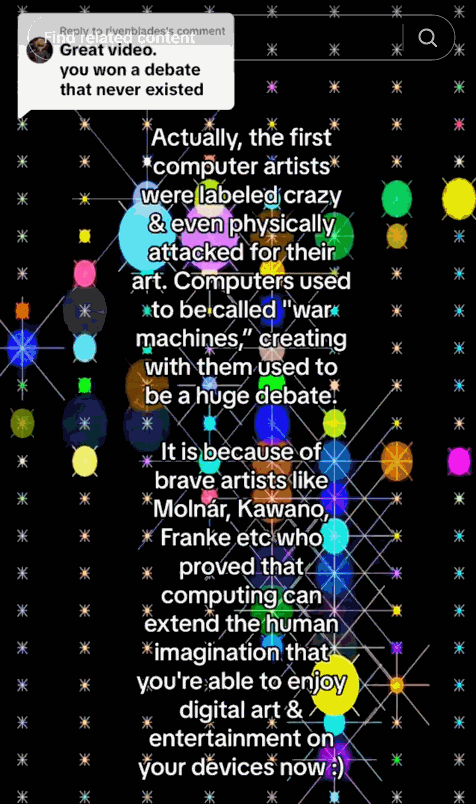
Vera Molnár (1924–)
Vera Molnár, age 99, is a living Hungarian-French artist who was one of the first ten people to make art with a computer. She has been called the “Grande Dame of Generative Art”. In 1968, Vera Molnar started working with a computer at the experimental psychology lab in Sorbonne, where she created her first plotter drawings, applying what she had been exploring in earlier years without using a machine.
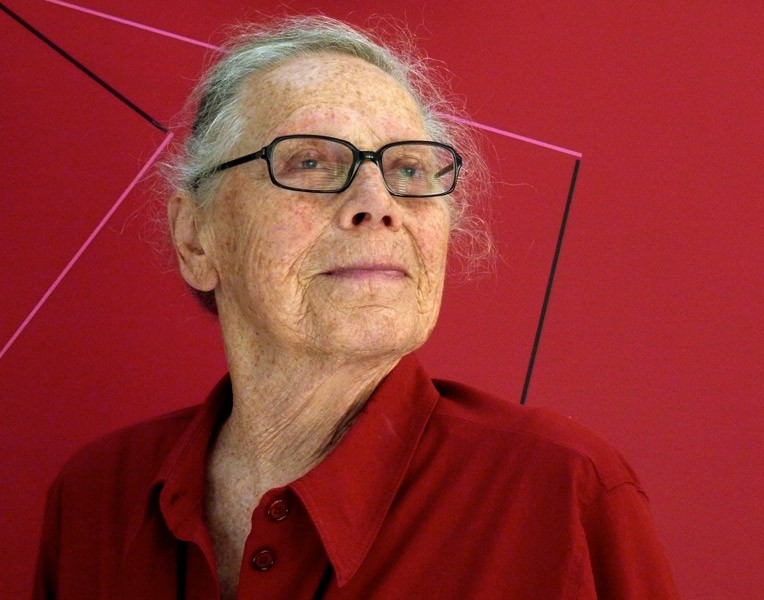
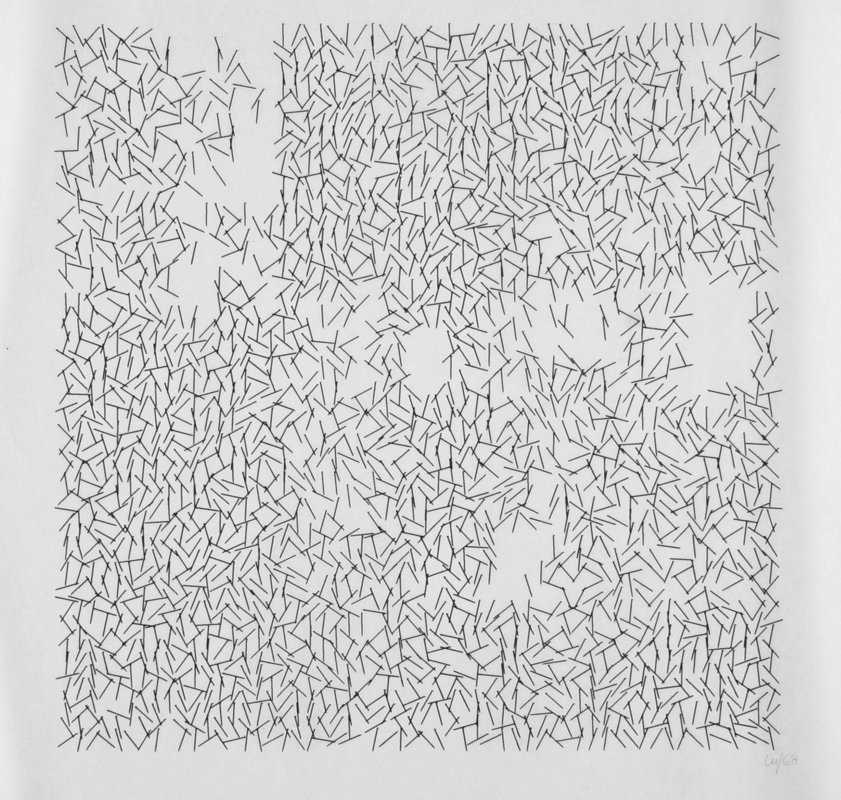
She wrote:
“Thanks to its many possibilities of combination the computer helps to systematically research the visual realm, helps the painter to free herself from cultural ′readymades′ and find combinations in forms never seen before, neither in nature nor at a museum: It helps to create inconceivable images. The computer helps, but it does not ′do′, does not ′design′ or ′invent′ anything. To avoid another misunderstanding I wish to underline something else: The fact that something is new and has not been seen before is no guarantee in any manner for its aesthetic quality. Was the portrayal of a young man with curly hair − Dürer′s self-portrait from around 1500 − new?”
(Molnár in 2017, above. Watch from 15:10.) Here’s Molnár in the mid-1960s, and below it, in 2020:
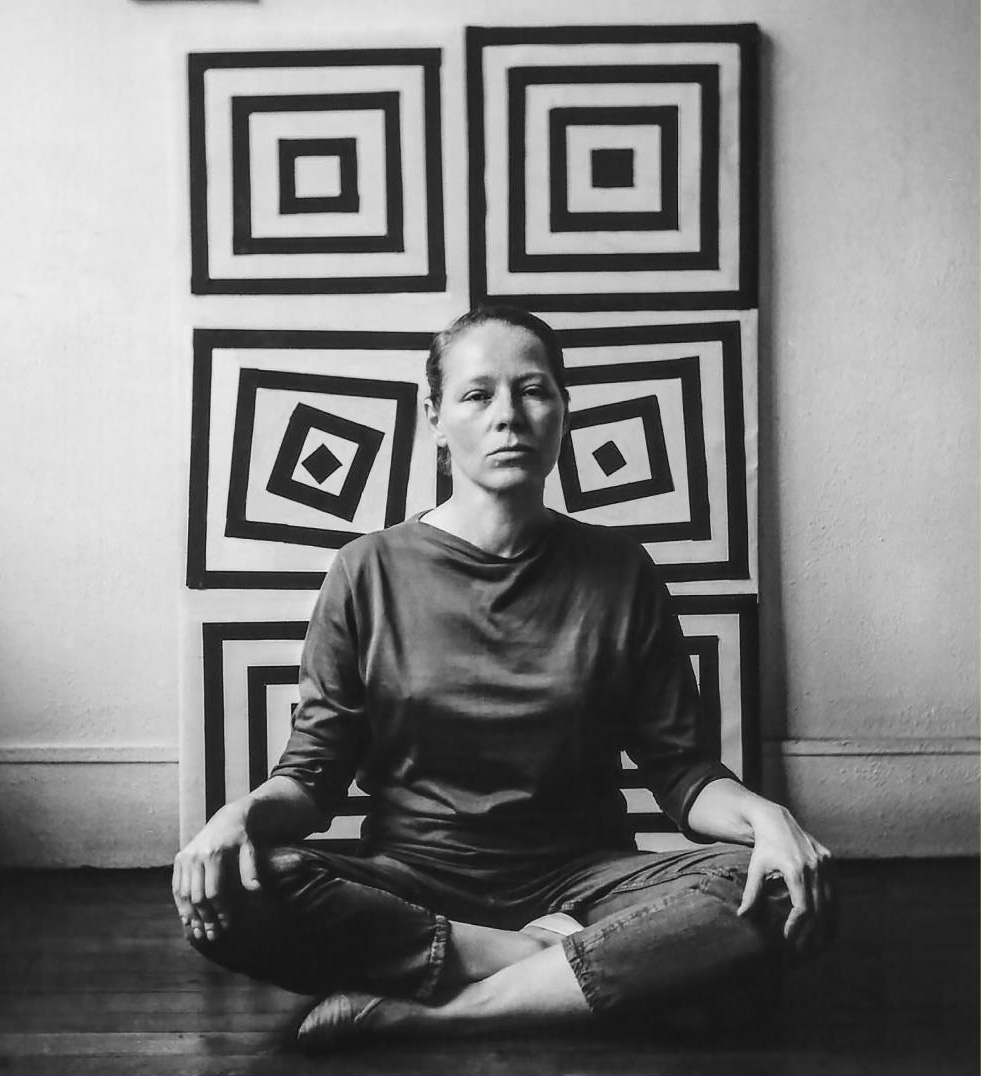
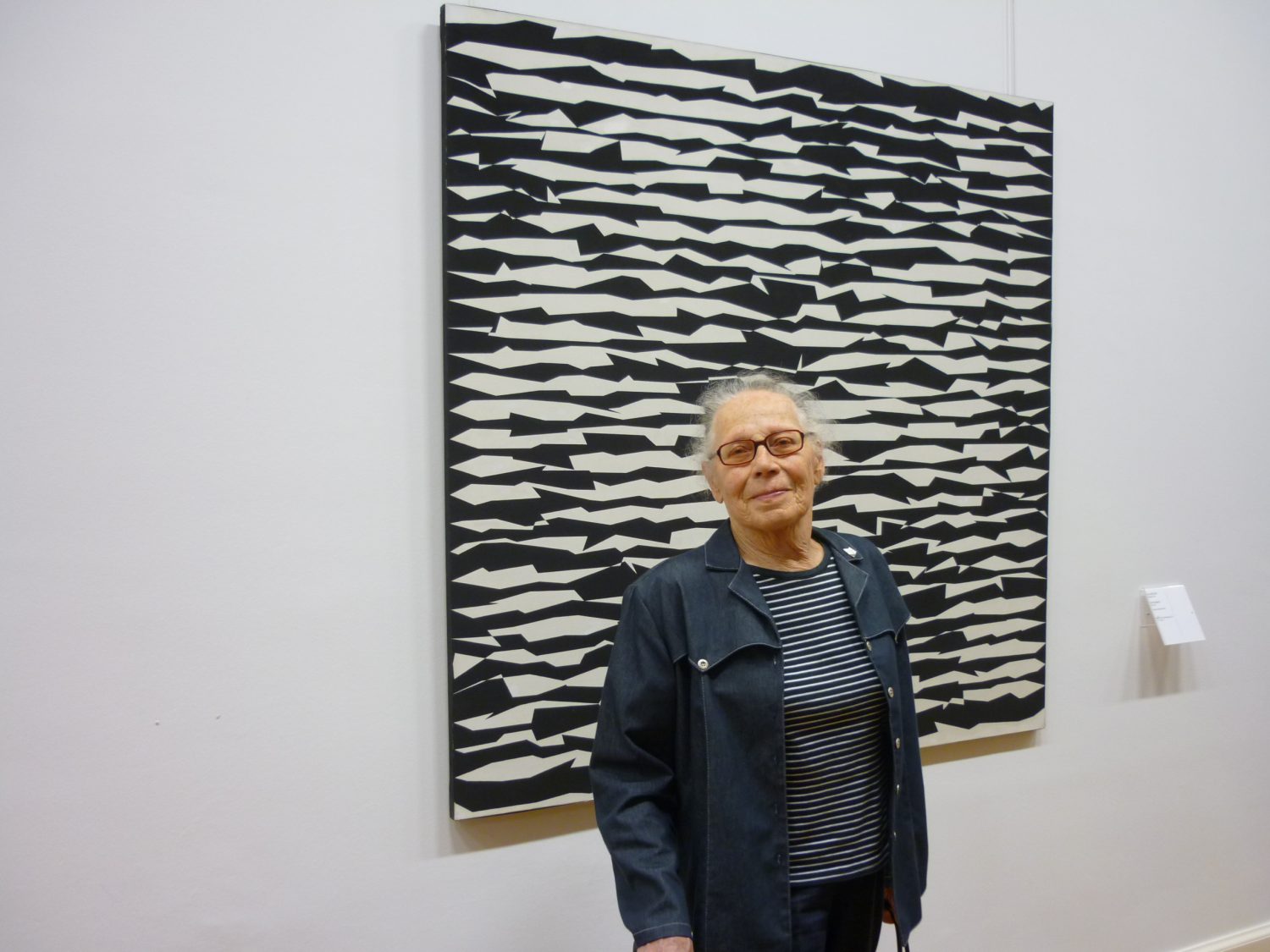
Duane M. Palyka (1944–)
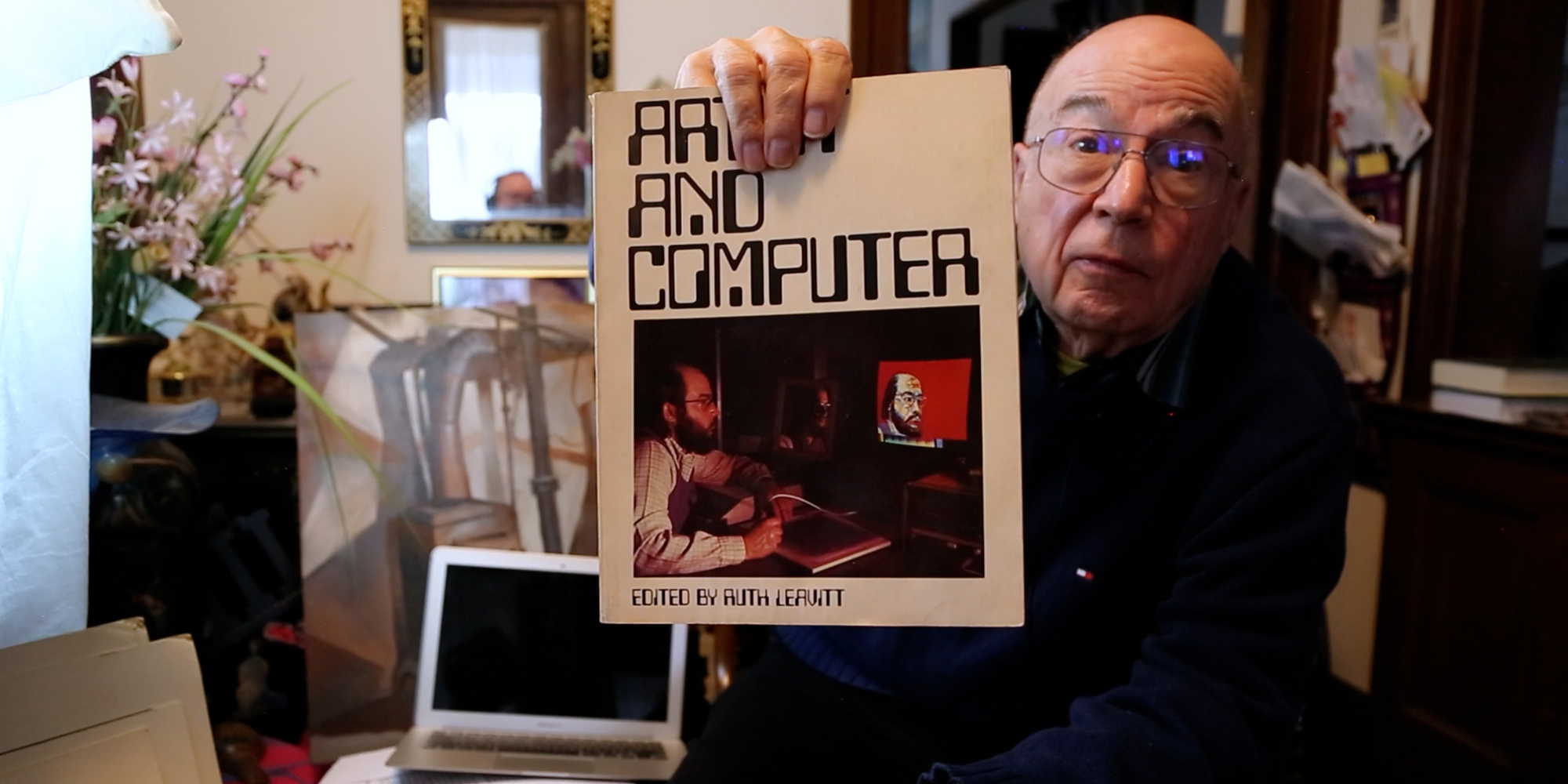
Duane M. Palyka (born in Pittsburgh, 1944) studied mathematics (B.A. 1968) and fine arts (B.F.A. 1969) here at Carnegie Mellon University — making him the first person to earn a Computer Science and Art degree combination at our school. His path to freely creating cutting-edge, computer-generated art was not without obstacles. The head of the CMU computation center frowned upon using precious computer time for the creation of art; he called the undertaking “not normal,” and halted Palyka’s work. Luckily, CMU professor Herb Simon stepped in and offered support to Palyka through mentoring and a stipend to further his research. In 1968, while still an undergraduate, Palyka’s computer-generated art was exhibited alongside other pioneering artists like Nam June Paik in the landmark Cybernetic Serendipity exhibition at the ICA London. Watch his interview in this CMU oral history video (from 5:12-10:07).
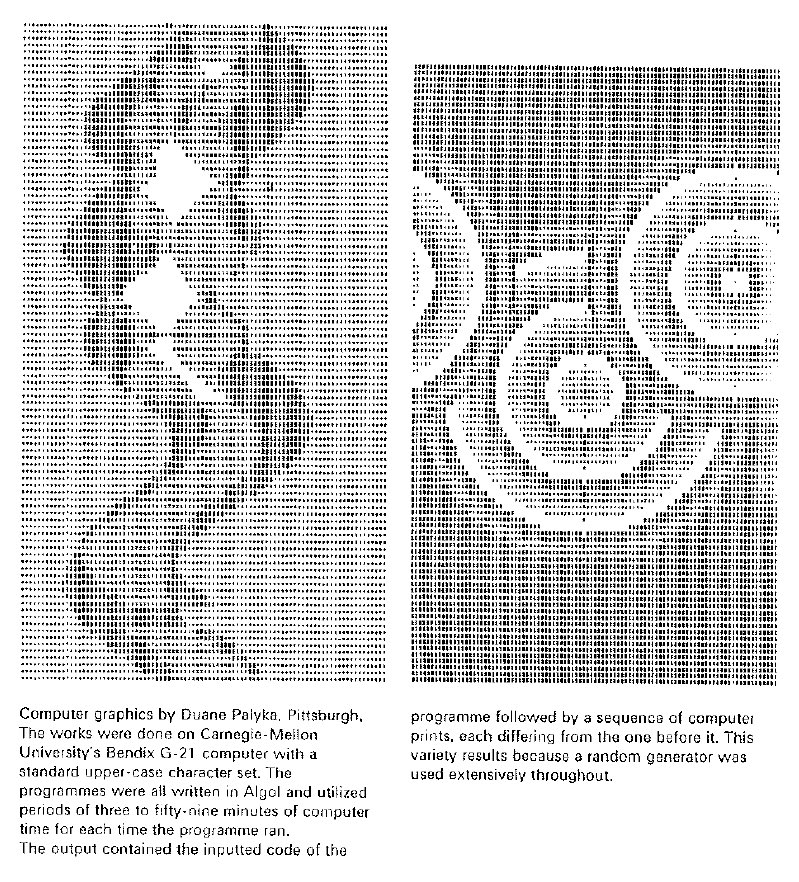
Computer Art is the bastard child of CS and fine art—rejected by both parents. Manfred Mohr (born 1938) is another of the first dozen or so people to make art with a computer; Here’s a brief excerpt from an interview with him.
